Young Vietnamese People Learn the Art of Wax Drawing on Batik Fabric
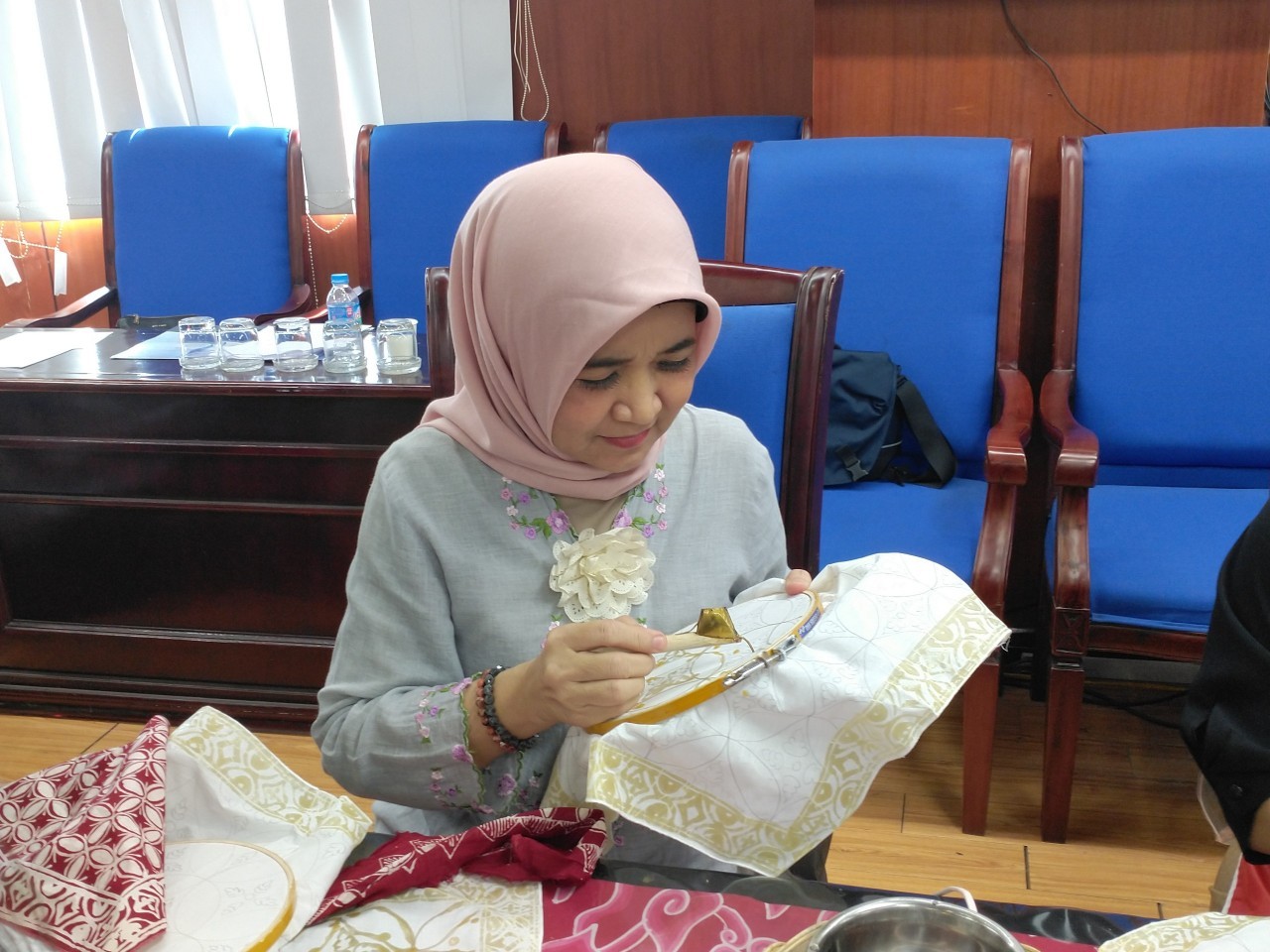 |
| Artisan Ira Ratna Handayani teaches Vietnamese participants to draw Batik. Photo: Mai Anh |
Several Vietnamese youth took part in the Indonesian traditional Batik drawing experience program held by the Indonesian Embassy in Vietnam in partnership with the Vietnam – Indonesia Friendship Association.
This program was held in Hanoi to commemorate the 10th anniversary of the strategic alliance between the two nations.
It also aims to introduce Batik fabric, creating opportunities to learn and improve understanding of the culture and traditions of the two peoples, thus fostering the friendship between the two countries.
Participants had the opportunity to learn and experience Batik, an Indonesian technique of wax-resist dyeing, under the guidance of Sri Ratna Handayani, an expert Batik artisan from Indonesia. With her instruction, they used a canting to draw beeswax onto the fabric.
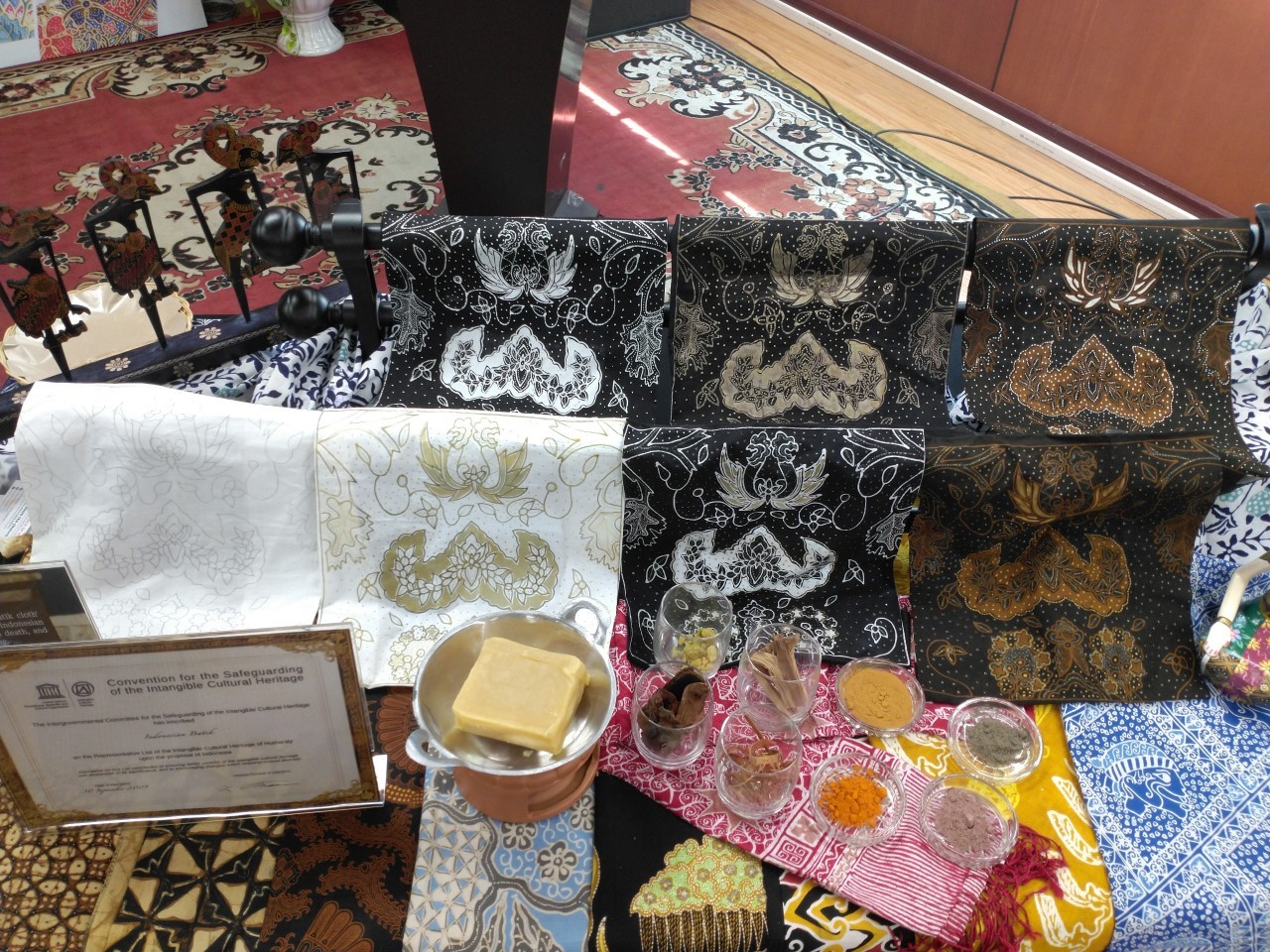 |
| Batik is a traditional Indonesian dying used in patterns and drawings, typically on fabric and finished textiles. Photo: Mai Anh |
In 2009, Indonesian batik was officially recognized by UNESCO and inscribed on its Representative List of the Intangible Cultural Heritage of Humanity. This honor acknowledges the unique and beautiful artistry of the intricate hand-crafted designs that have been passed down through generations.
For Indonesians, batik is not only an art form but also a cultural symbol that encapsulates social standing, local communities, nature, history, and cultural heritage. It is deeply cherished by the people of Indonesia, representing the many aspects of their collective identity. Batik is a craft that has been passed down through generations, and is now considered a national symbol of pride. It is a way for Indonesians to express their unique identity, and to create something that is truly special and meaningful.
The physical aspect of batik — its techniques — as well as the symbolism behind this hand-dyed cotton and silk garment, tells a captivating story of Indonesian people from beginning to end. This traditional art form, which has its roots in ancient cultures and civilizations, is renowned for its intricate and beautiful patterns, and has served as a source of inspiration for countless generations. From the materials used to the intricate patterns and motifs, each aspect of batik tells a unique tale of the Indonesian culture.
The process of creating batik is complex and requires great skill. It begins with a white cloth, usually made of cotton or silk, which is then dyed with wax. The wax is applied in the desired pattern and the cloth is then dyed in a vat of dye. The wax prevents the dye from penetrating the cloth, creating intricate and beautiful patterns. After the dye is applied, the wax is removed and the cloth is washed, revealing the stunning pattern.
The symbolism behind batik is just as captivating as the physical aspect. Each pattern and motif has a unique meaning, from fertility symbols and floral motifs to geometric shapes and religious symbols. These patterns, colors, and motifs all have a unique and profound meaning that is deeply entrenched in the Indonesian culture.
Batik is a beautiful art form that has been passed down from generation to generation. Its physical aspect, as well as its symbolism, tells a captivating story of Indonesian people, from beginning to end. From the materials used to the intricate patterns and motifs, batik is a source of inspiration and awe that will remain cherished by many for years to come.
Batik is an artform that is created using a resist technique, wherein Indonesian artists use hot wax to create intricate patterns and designs that will not absorb dye when the fabric is dyed. The hot wax is applied using an implement called a canting, and this craft is typically passed down from generation to generation within families in Indonesia.
It involves using a canting, a pen-like tool, to draw patterns and designs on fabric. The canting is dipped in hot wax and used to draw on the fabric. Once the design is complete, the fabric is dyed and the wax is removed, leaving the design on the fabric.
Machine batik is the most common method of batik and is used to make mass-produced items. It involves the use of a mechanical stamp to print patterns onto fabric using hot wax. Once the design is printed, the fabric is then dyed and the wax is removed.
Stencil batik is the least common method of batik and is often used to make more intricate, detailed designs. It involves using a paper stencil to create a design on fabric. Then, hot wax is painted over the stencil. Once the wax has cooled, the fabric is dyed and the wax is removed, leaving the design on the fabric.
There are three main types of batik: hand batik, machine batik, and stencil batik. Hand batik is the oldest and most expensive method of batik, and involves using a canting, a pen-like tool, to draw intricate patterns and designs on fabric. The canting is dipped in hot wax and used to draw on the fabric. Once the design is complete, the fabric is dyed and the wax is removed, leaving the design.
Machine batik is the most common method of batik and is used to make mass-produced items. It involves the use of a mechanical stamp to print patterns onto fabric using hot wax. Once the design is printed, the fabric is then dyed and the wax is removed.
Stencil batik is the least common method of batik and is often used to create more intricate, detailed designs. This method involves using a paper stencil to create a design on fabric. Then, hot wax is painted over the stencil. Once the wax has cooled, the fabric is dyed and the wax is removed, leaving the design on the fabric.
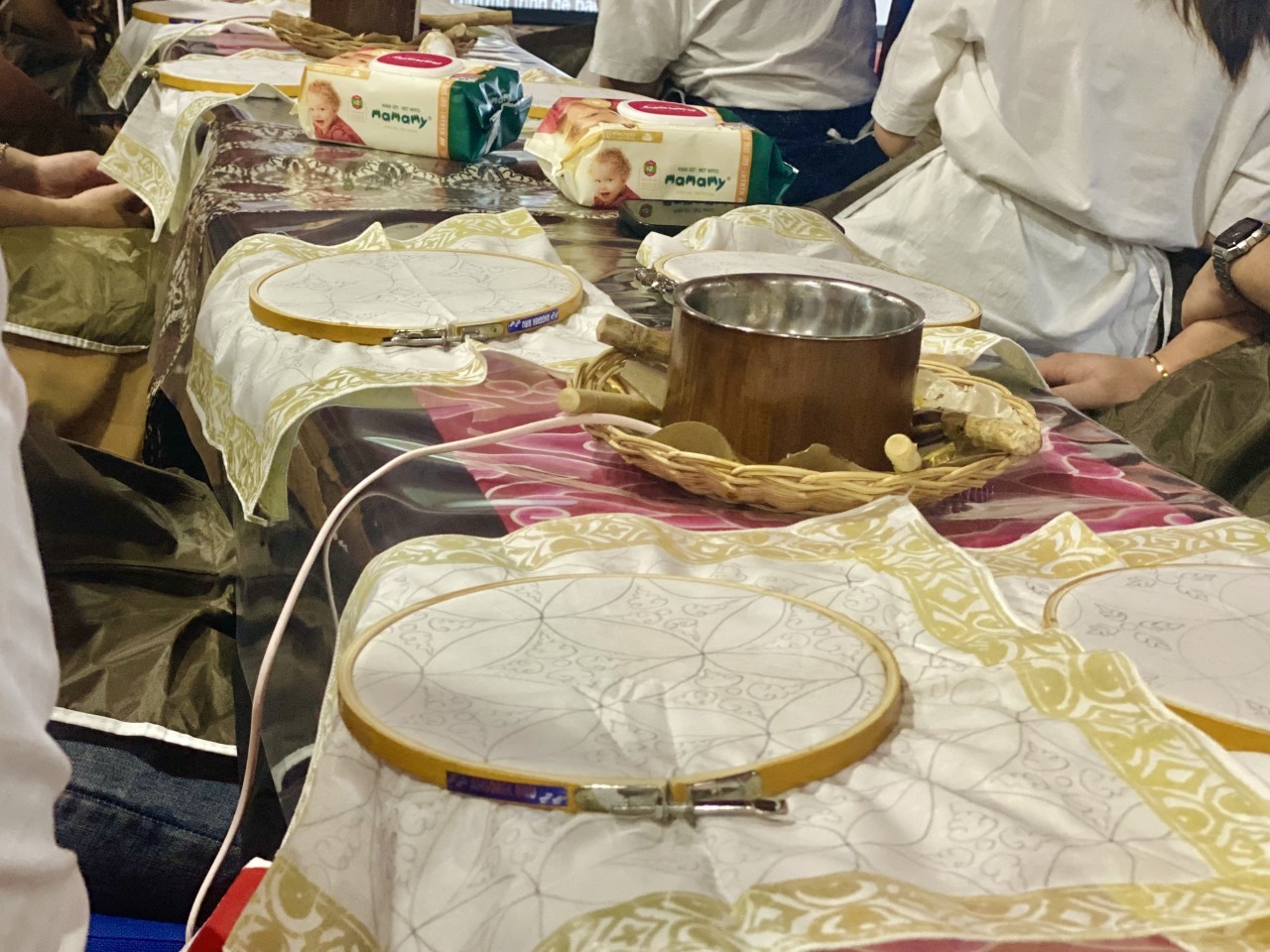 |
| Youths came together to try their hand at Batik-making in Hanoi. Photo: Mai Anh |
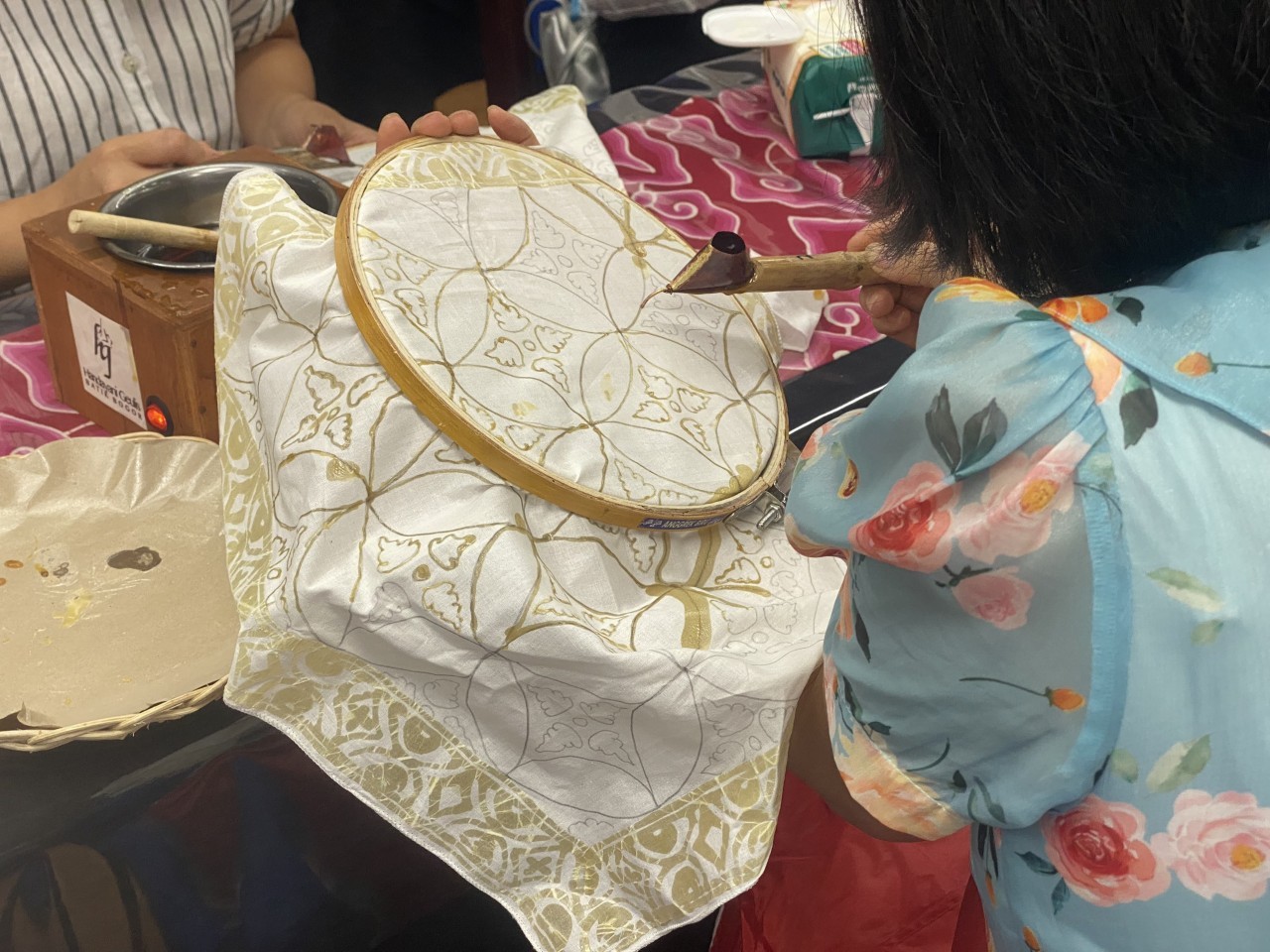 |
| Participants use wax-based dyes to paint patterns directly onto fabric. Photo: Mai Anh |
Tran Minh Hung, President of the Vietnam-Indonesia Friendship Association and Vice President of VOV, has stated that the program is an essential part of a series of cultural exchange activities that are designed to promote mutual understanding between the two nations. In 2009, UNESCO recognized Batik as an Intangible Cultural Heritage of Humanity. This form of art is not only aesthetically pleasing, but it also carries the emotions, soul, and life of the Indonesian people.
The Indonesian Ambassador to Vietnam, Denny Abdi, expressed his hope that the program will enable Vietnamese people to gain a greater appreciation and understanding of Indonesia’s rich and diverse cultural heritage.
Skillful artisan Ira Ratna Handayani is teaching Vietnamese participants the art of drawing Batik. She commented that many of those who are attempting to draw Batik for the first time often struggle with the process due to its demanding nature, requiring a high level of precision, attention to detail, and dedication.
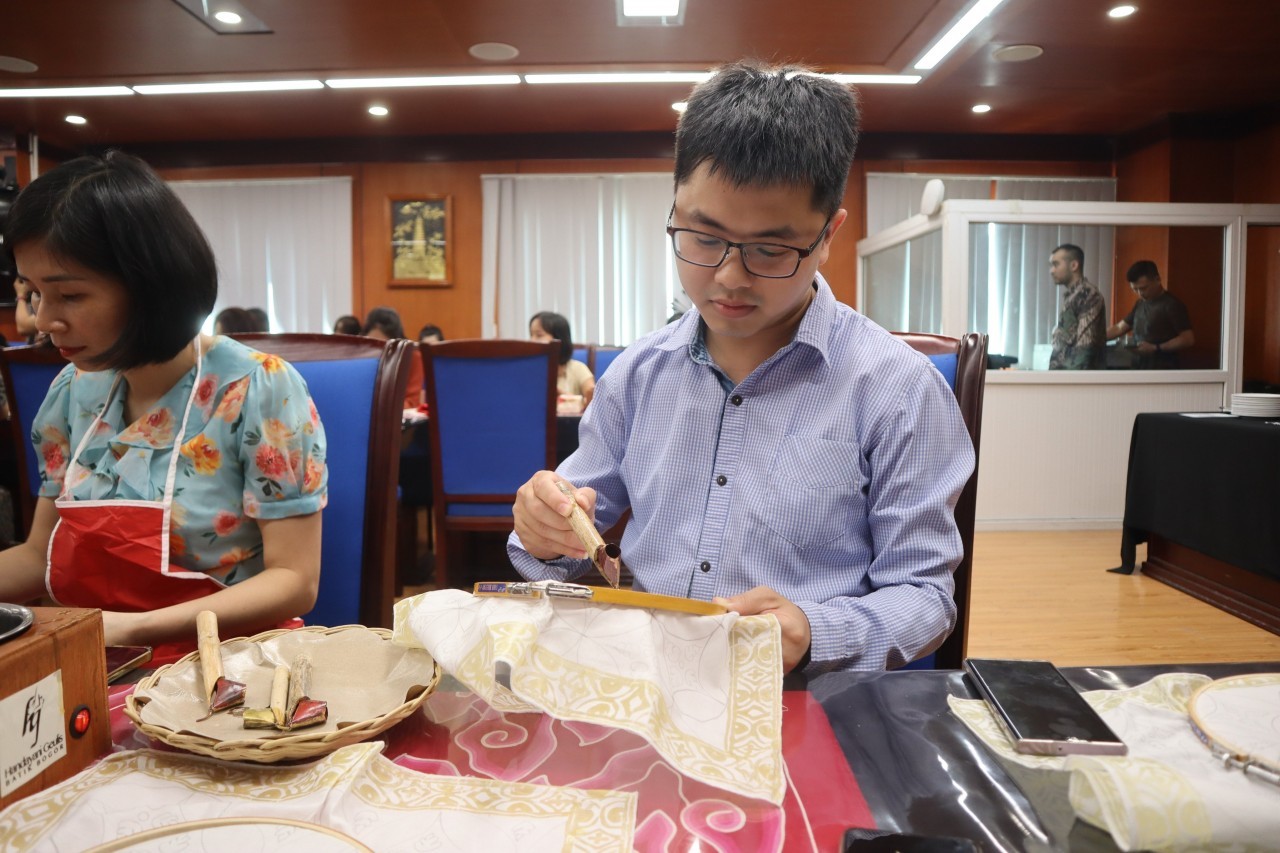 |
| Do Anh Duc, who participated in the experience, said, “Doing Batik in Indonesia and drawing patterns with beeswax of the Vietnamese H’Mong are similar in the use of beeswax, different in fabric, painting tools, dyeing method”. Photo: Mai Anh |
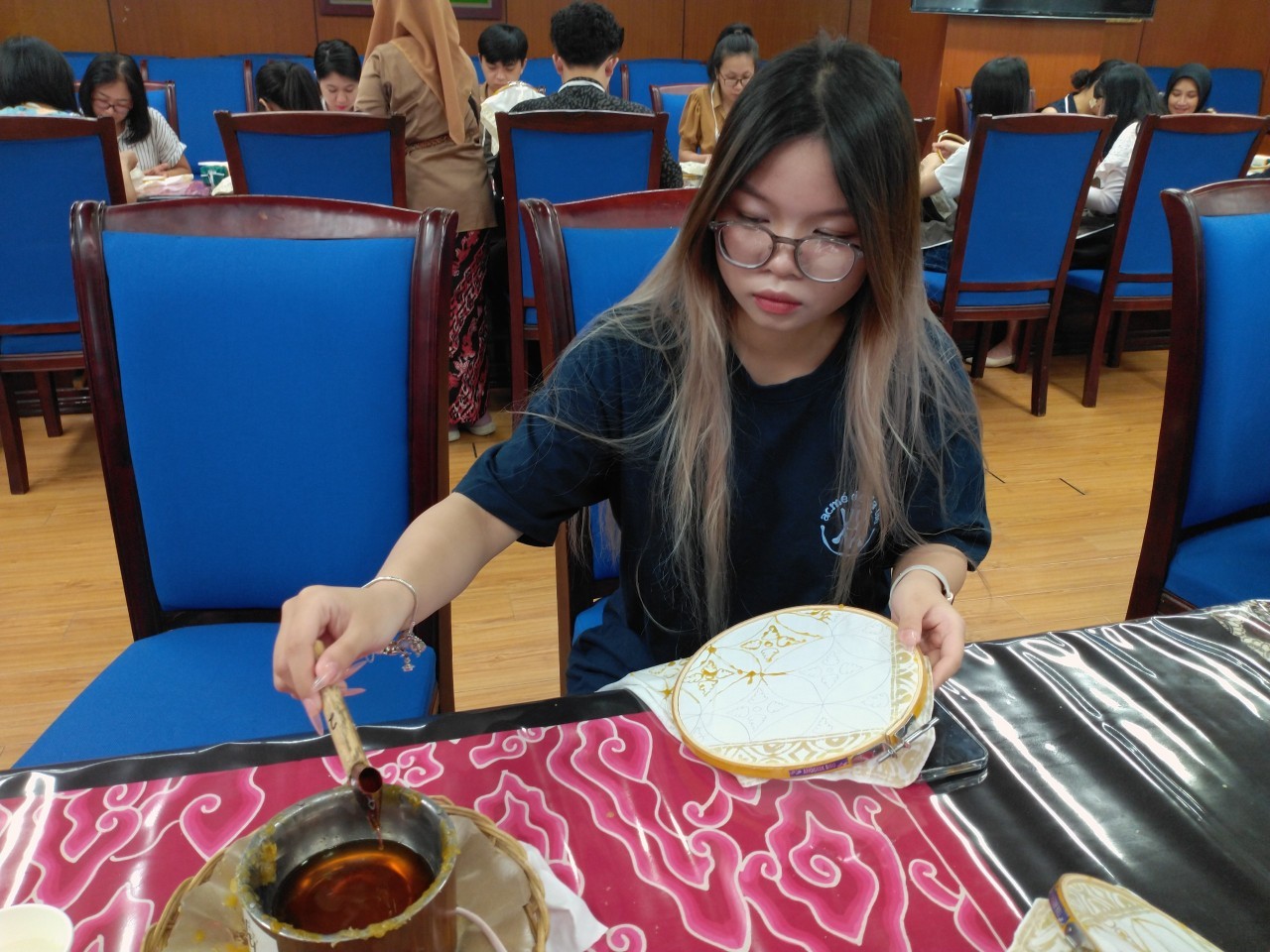 |
| Minh Tam, a fourth-year student at National Economics University, shared that the most difficult thing for her is to control the amount of candles out of the pen without dropping the candles on the cloth. Photo: Mai Anh |
Last year, several introductory Batik activities were held in Ho Chi Minh City and Dong Nai province as part of the series of events for Batik Week – a cultural exchange activity initiated by the Indonesian Government and organized in collaboration with other countries.
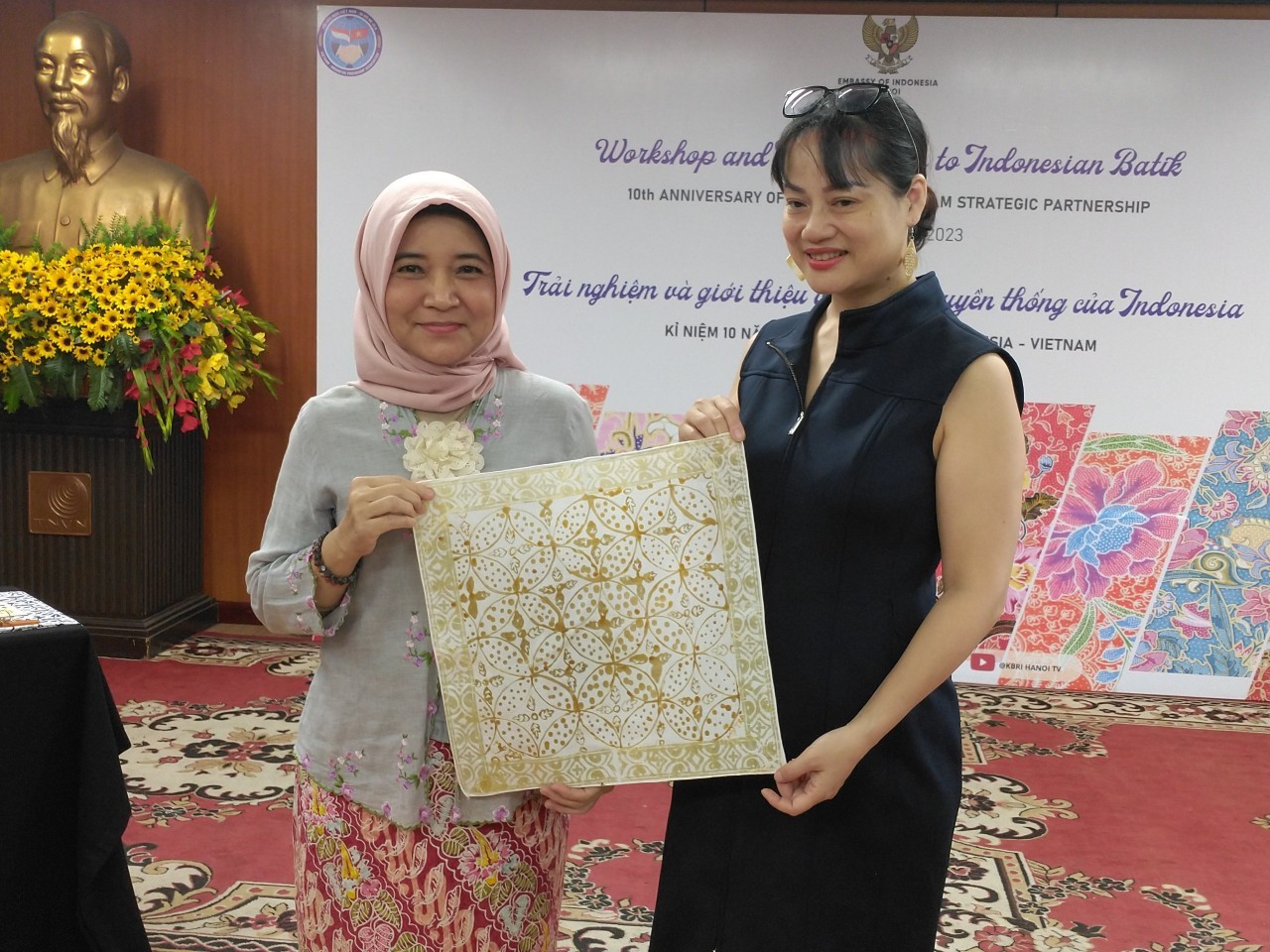 |
| Three participants drawing the most beautiful works received gifts from the organizing committee. Photo: Mai Anh |
The post Young Vietnamese People Learn the Art of Wax Drawing on Batik Fabric appeared first on Vietexplorer.com.
Nhận xét
Đăng nhận xét